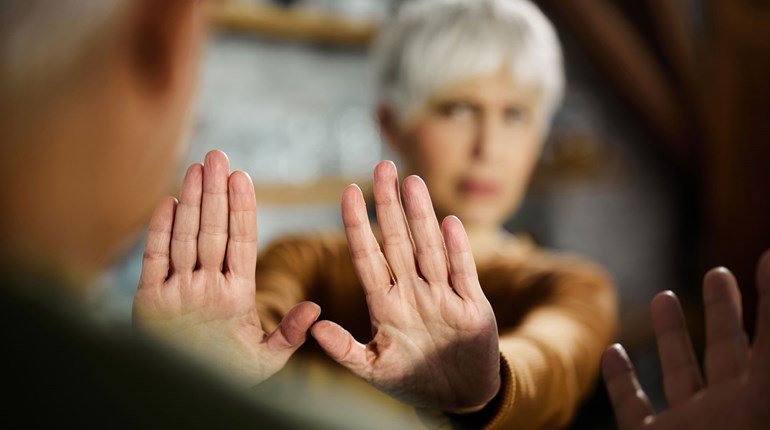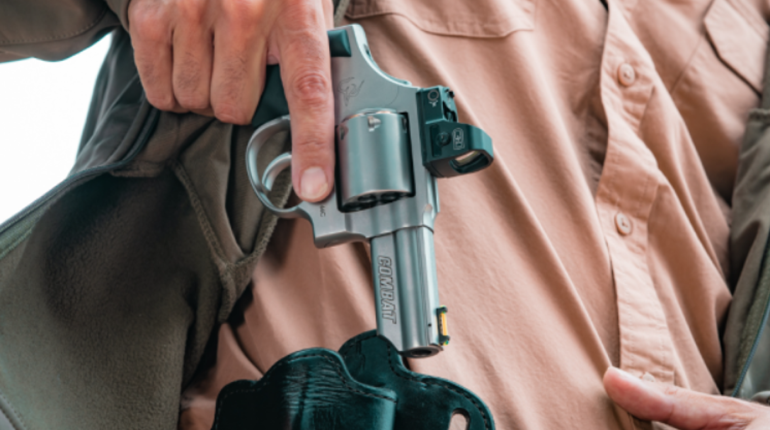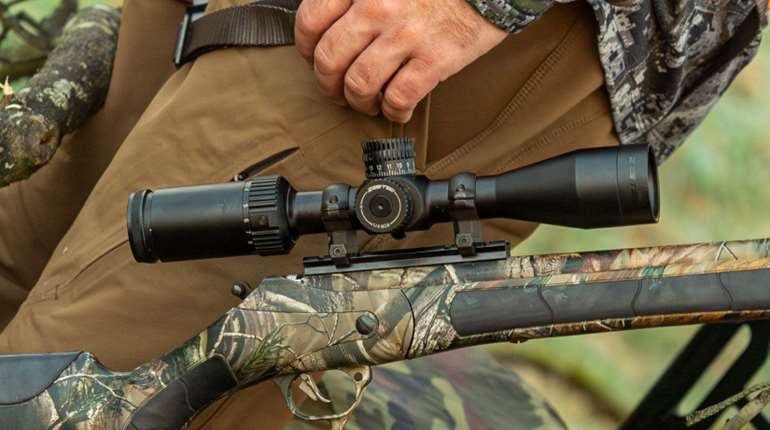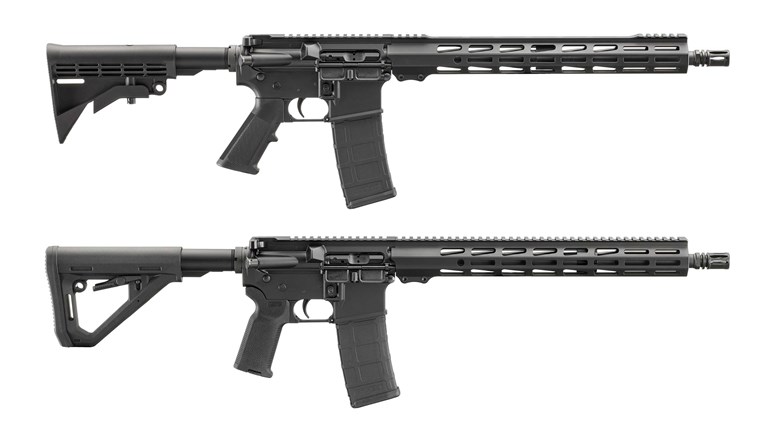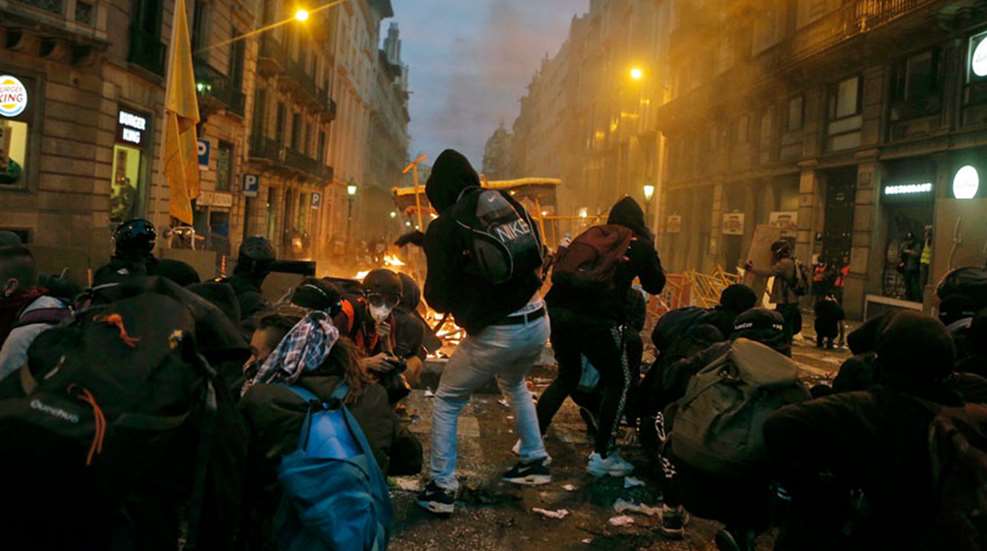
Civil unrest on a national level—protests, riots, looting and unprecedented street violence—have sadly become part of our American landscape. With a decline in police intervention and the fact that extreme physical violence can spontaneously erupt anywhere, it should make you ponder what can be done to stay safe.
It doesn’t matter if you’re a young female, elderly male or even a public official; given the current state of affairs, there’s a higher-than-normal chance of physical assault should you find yourself confronted by an aggressive attacker at any number of hot spots. Incidents of bystanders being physically assaulted have escalated to the point where it has caused genuine concern.
You may be targeted as a victim of a one-off violent physical attack ranging from shots fired to the so-called “Knockout Game”—one of many names given to physical assaults in which one or more assailants attempts to knock out an unsuspecting victim, often with a single sucker punch, all for the amusement of the attackers and their accomplices.
Such acts of violence result in real victims who sustain serious injuries and either end up in a hospital or a morgue. It’s deadly serious business, and as a concerned citizen, what can you do to protect yourself and your family from falling victim to this barbarism? The answer is found in defensive measures. You can reduce the odds of ending up a statistic by arming yourself with some recommended basic defensive measures. Here's a look at the 10 best ways to defend yourself against civil unrest.
Forewarned is Forearmed
Open-source intelligence (known as OSINT in the defense-intelligence community) is the collection and analysis of information gathered from public, or open, sources. The term “open” refers to overt, publicly available sources (as opposed to covert or clandestine sources).
Everything from listening to the news to reading articles to watching videos can provide you with a tremendous amount of relevant information. OSINT is primarily used in national security, law enforcement and business-intelligence functions and is of tremendous value to trained analysts. This information can tell you the time and location of a specific event or trending of events.
For example, if your travel plans take you through a particular neighborhood, where you know there have been incidents of violence in the last couple of weeks, then you are best advised to either avoid that part of town or, if you must traverse it, then at least click your “potential-threat radar” up to the highest setting. You can then dial it back down after you pass clear of the known threat area.
If you do not place yourself in the middle of a volatile situation in the first place, it significantly decreases your odds of being harmed. In other words, if you don’t show up for a riot, then you likely won’t get hurt in one.

Three Seconds
Is your personal security worth the price of 3 seconds? Based on interviews with perpetrators who are now sitting behind bars, the most common denominator of victim selection is found to be an “unsuspecting victim.” That is, someone unaware of his or her surroundings and unsuspecting of a pending—potentially lethal—attack. This observable unawareness clearly labels you as a potential victim. You can think of this as a giant blinking neon sign pointing directly at you, reading “PICK ME” in the eyes of an attacker.
“The thing about [assailants], they catch you when you’re not looking,” said one victim. The easy defensive measure to combat that? Take a few seconds and look.
Situational awareness amounts to nothing more than observing your environment. We have a tendency to have our faces buried in our smartphones, texting or talking and completely detached from our immediate environment. From the predator’s perspective, this is equivalent to watching an ostrich with its head in the sand—easy prey.
The predator looks directly at you, and the secret to maintaining situational awareness is to simply look back. Occasionally, take a whopping 3 seconds to look up from your cell phone to see who is nearest you. When a pack of hunters observing potential prey notices that the prey is aware of its presence, the crucial element of surprise—which is their primary selection criterion (unsuspecting victim)—is completely removed from the equation.
If you’re able to hear it, see it or smell it coming, then you can step off those railroad tracks long before that freight train hits you. You can accomplish this beneficial task by using your situational awareness.
Should one of your five senses pick up a threat indicator, such as seeing a bad guy across the street moving toward you with a knife, hearing gunfire, smelling smoke, screeching tires, etc., you are alerted to a potential physical threat. The extra few seconds, or even minutes in some cases, affords you the opportunity to not be there should the threat continue to develop.
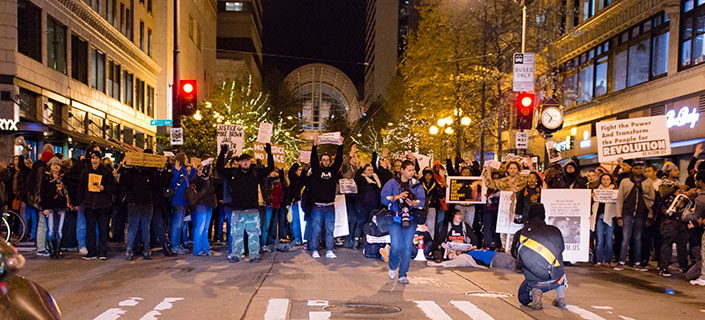
Mob Mentality
Mob mentality is fickle and can change like the wind. In 1 second, a large group can be milling about, holding signs and peacefully chanting. In the next second you observe fistfights, flying bricks and airborne Molotov cocktails. The best defense against being attacked by a mass of human beings is to first be made aware of its presence and then do everything possible to avoid direct or peripheral contact.
If you must, for whatever reason, stay in that same physical area, then it’s best to navigate to the perimeter or completely avoid contact altogether. Move to an open area where you have a clear line of vision to your next objective—back to your car or the safety of a store or open business, for example.
If you are confronted by a mob, your best defense is de-escalation and avoidance. Remember, there are many more of them than there are of you, and it would be unhealthy to make a stand. Even if you are armed, you cannot be sure of your backstop, especially when surrounded by that many people. Bottom line is that you will eventually be overwhelmed by sheer numerical superiority.
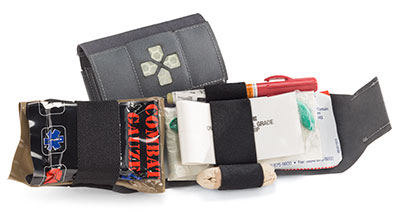
Tactical Medicine
It is strongly recommended to always have a compact bleeding/gunshot-wound-trauma kit (including a tourniquet) on hand. Stopping blood flow is one of the most important steps you can take in treating a gunshot, edged-weapon or shrapnel wound.
Keeping a few medical supplies on hand could save your life or the life of another. A basic gunshot-wound (GSW)-trauma kit, including a tourniquet, combat gauze, control elastic wrap, chest seal and a space blanket should comprise the basics. The form/size of your kit should be a factor in your consideration. Is it compact enough for everyday carry? Will you carry it in your purse, in your car, keep one at your office?
Bottom line with a GSW kit is to win the fight, “stop the bleeding, help them breathe, warm not freeze and get ready to leave.”
Trust Your Gut
When you take those few seconds to pull your head out of the sand and look around, what does your gut tell you? It’s absurd to walk around in a state of raging paranoia, suspecting everyone around you as a potential attacker. However, knowing what to look for when you are observing your environment and trusting your powers of perception (gut feeling) allows you to assess a potential threat and prepare you to respond appropriately.
Reports indicate that a hunt pack usually consists of a group of unruly individuals out to size up their victims. If you’re walking on the street and you look up and observe a group of what your gut tells you may be potentially hostile people moving in your direction, then it might not be a bad idea to remain fully alert by keeping your attention (not necessarily your eyes) focused on reading their body language and movement. Depending upon what your gut tells you, it may also be a good idea to put a safe distance between yourself and that potential threat.
Create Space
The first and best reactive option in avoiding a threat or reducing injury is to move off the “X,” otherwise known as creating space. Whether in a vehicle (air, water or ground) or on foot, more space—a larger gap—brings you farther away from the threat, out of harm’s way and with the least potential for physical injury. It is considered an optimal tactical response.
Greater distance means you have created a greater reactionary gap between yourself and the threat. You have become a more difficult target. A moving target is more difficult to hit than a stationary one. The farther away you move from the threat, you become “smaller” and a more technically difficult target to pursue in terms of both time and effort.
Threat Engagement
Failing to create space, the defensive “A” answer, your very next option is to use whatever physical means at your disposal to get yourself into a position so that you can get out of danger with the least degree of injury. Inescapably, the one-word description for this is to fight.
Fighting is not easy. Fighting is not pretty. Fighting is pure violence of action. It transcends all language and cultural barriers. It requires full mental and physical commitment. It may be throwing a hammer at your assailant’s head or a scalding-hot pot of coffee in their face or slamming the point of scissors into your attacker’s left eye to cause a distraction. Whatever it takes to immediately fight your way out is always better than the alternative.
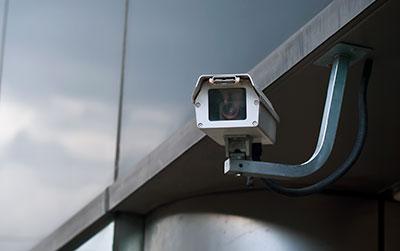
Controlled Areas
In the world of professional protection, a controlled area is any space that is monitored by cameras and/or other security-response options. It may be a store or a place of business that has cameras, security guards or armed officers. A controlled environment can also be your home or your car.
Your safety increases relative to the level of security provided by that controlled area. If you are in your vehicle, you are safer than if you are on foot. You are usually safer behind the walls and doors of a restaurant or business than you are outside those walls. You are the most vulnerable when exposed in between controlled areas.
Vehicle Defense
Your car is a controlled area and one of the safest places you can be.
You want to avoid driving through or near hot spots. Using your OSINT, you can check any number of apps (Google Maps, Waze, etc.) to find traffic jams, construction or road closures and how you can reroute around those problem areas. Don’t be afraid to drive off road or travel in reverse in dire situations. Staying mobile and keeping distance always gives you the tactical advantage.
As always, keep your doors locked so assailants cannot readily pull you out of your car. Keep your windows rolled up so they can’t reach in or introduce weapons (such as chemical mace or pepper spray) into the cabin.
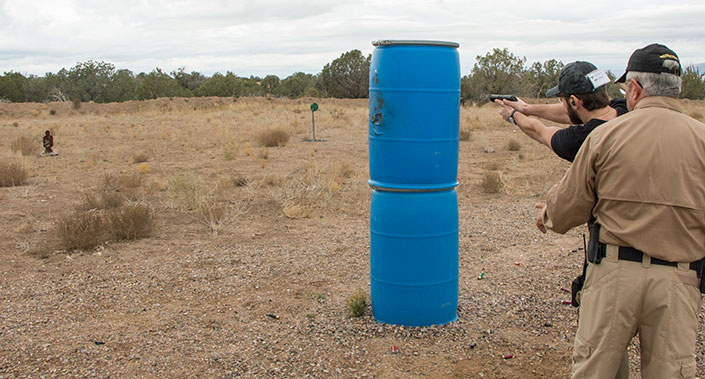
Get Trained
Your survival odds increase exponentially when you are trained. Most people who carry a firearm believe it to be a talisman that, if carried on their person, will ward off all evil. Nothing could be further from the truth. If you carry a firearm, then you are on the hook for appropriate gun safety, handling and marksmanship, all of which are perishable skills. Get to the range. Work on your presentations (rapid deployment); work your depth of shooting at varied distances, including manipulations such as ammunition management (reloading), and resolve malfunctions (failure to fire, failure to feed, etc.).
If you elect to carry a non-ballistic personal-defense option such as a knife, expandable baton or other impact weapon, these also involve technical and perishable skills that require ongoing training in either the martial arts or a qualified non-ballistic weapons fighting school. Minimally, you should be working on maintaining your physical fitness at an acceptable level with regular cardio and/or strength training.
If you can’t see, smell or sense an attack coming and somebody pops out from around a dark corner and smacks you really hard in the back of the head, there’s obviously no defense for that. However, in preparation for all else, you can take advantage of these recommended defensive measures to even the odds of your remaining safe. In a violent world, our safety is our own responsibility.













